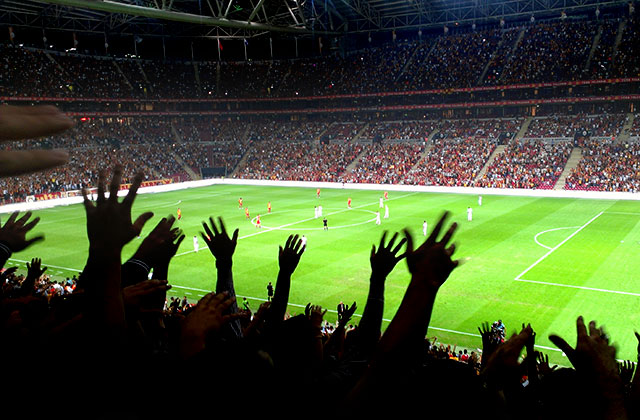From his column in the Observer:
‘Whatever the future holds, though, wherever we're playing, however great our toilets become, we and all the other clubs aren't going to achieve anything in developing atmosphere and reclaiming the spirit of watching football unless we're able to reverse one thing: the ban on terraces.
‘This feels like stating the obvious - but in case the FA are reading, let's do it. Watching football is a passionate, emotional experience. I stand at Selhurst because I always have done: as a youngster I'd stand with my friends on the big, open Holmesdale terrace. Today, fans are standing in seated areas at grounds across Britain, contravening ground regulations by behaving totally naturally.
‘The Football Licensing Authority tell clubs to force fans to sit down, or face having sections of seating closed. It's bizarre that clubs should be financially punished. OK, if I was going on the Tannoy and demanding our fans stand up for 90 minutes then fine, charge me, take action against us. But if I'm trying to do the exact opposite - trying everything reasonable - what then? Stewards constantly ask fans to sit, and we've even tried writing to repeat offenders threatening to withdraw tickets - a ridiculous threat for a business to have to make to its customers: stop enjoying my product.
‘It's so unrealistic. If the away fans, over whom we have no jurisdiction, stand and scream abuse all match, are the FLA really expecting home fans to bite their lips, sit still and ignore it? They need to explain two things: 1) How long is it all right to stand up for, under FLA guidelines? Which bean counter defines that? Should we have someone with a stopwatch telling us how long we're allotted for standing after a goal, or during a red card or a sustained attack? 2) Exactly what other measures do they suggest clubs take?
‘I'm lost for ideas. Maybe they'd like to install seat belts for away fans, with airline-style stewards making sure belts are on at all times. And shouldn't there be a campaign under FLA guidelines to ban the Mexican wave? It's our responsibility to adhere to the regulations that are in place, but what if they're unenforcable?
‘The only way to sort out this mess is to acknowledge that safe standing areas are not only realistic, but desirable. After a disaster as horrific as Hillsborough, lessons are learned, reassessed and learned again. It's 16 years since that day, since 96 fans went into a ground to stand up and cheer their team, and didn't come out again because of a series of gross, fatal mistakes. It was a sickening waste of life - an event no one in this country will ever forget. But in those 16 years, so much has changed, so much has progressed.
‘New evidence suggests the difference in safety between small, controlled, well-engineered standing zones and seating is negligible. Some studies suggest restrictive seating is actually more dangerous. And when people jump up out of their seats, you get more movement in the stadium structure than you do if people are consistently standing. Advances with the science behind safe standing zones and crowd dynamics are immense. It already works in Germany, and clubs, police and stewards understand their health and safety responsibilities like never before. With safe standing zones, capacities go up, standing prices are cheaper, and younger fans are drawn to the buzz.
‘It's simple. The secret of a good stadium isn't just toilets - and in the experience of our stadium staff, away fans tend to piss where they like anyway - it's in using new technology to recover the lost qualities of the football watching experience.
‘The government need to read and assess the new research, to know that what they're enforcing via the FLA is a totally alien version of spectating. People - this paper included - have been saying football's going away from its roots with over-pricing and salaries and glamour and roasting. If there's a better way to win back some of what we loved about football in the past, I'd like to know what it is.’
